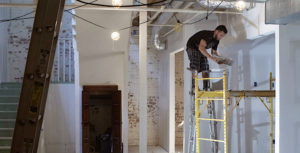
Construction defect claims are very technical and difficult to prove. One key aspect of a defect claim is that the claim is made within the statute of repose deadline. These statues typically begin to run upon substantial completion of the project. A recent California case confirmed that the definition of substantial completion is statutory, and can’t be modified by any contract language stating otherwise.
Defect claims based on substantial completion
Statute of Repose
When it comes to latent defects, knowing how long the statute of repose runs is crucial to understanding your liability and rights. A statute of repose sets an overarching limit for when a defect claim can be made after the project reaches substantial completion. In California, the statute of repose for construction defect claims is 10 years.
Why substantial completion is so important
Substantial completion is an incredibly important date on a construction project. This date will trigger deadlines such as prompt payment and retainage, and also opens up warranty periods. Even more importantly, the date of substantial completion will trigger the statutes of limitations and repose for construction defects.
But what is substantial completion, exactly? There are many different definitions out there. Some contractual and some statutory. But when faced with both, which one counts?
That was the issue presented in a recent California case.
See the difficulties in defining CA substantial completion here:
Construction contract using AIA contracts
The case in question is Hensel Phelps Construction Co. v. Superior Court of San Diego County.
Project Snapshot
- Owner: Private development company
- Eventual Owner/Manager: Smart Corners Owners Association (Smart)
- General Contractor: Hensel Phelps Construction, Co. (Hensel)
Hensel was hired by a private developer to construct a residential condominium tower. The property was, ultimately, to be managed by Smart. The contract executed between the parties is one of the standard AIA construction contract forms. As the project neared the end, the project architect issued an AIA Certificate of Substantial Completion on May 24, and a Notice of Completion was filed two months later. Ten years later, on July 6th, Smart filed a lawsuit against Hensel alleging numerous defective work claims.
Disagreement over when the statute of repose began
The case went through litigation for a year, until Hensel finally filed a motion for summary judgment based on the fact that the claim was barred by the 10-year statute of repose. Hensel argued that the statute of repose period began ticking when the architect issued the Certificate of Substantial Completion. Smart argued that the statutory definition of “substantial completion” should govern when the statute began, and the certificate wasn’t determinative. The trial court agreed and denied the motion for summary judgment. Hensel appealed.
Contract definition of substantial completion isn’t determinative
Under the AIA contract, the term “substantial completion” was defined as:
“when such Work or component is sufficiently complete in accordance with the Contract Documents to permit lawful occupancy and use thereof for its intended purpose.”
As far as the statutory definition, the court didn’t really expound on this. Stating that the date of substantial completion is an objective fact about the state of construction of the improvement, to be determined by the trier of fact. It is a statutory standard, not a contractual one.
Furthermore, the court went on to say that even if they allowed the contract to define substantial completion, the definition wouldn’t be binding on Smart. Smart was not a party to the contract; it was the initial developer. Smart never agreed to the AIA definition, nor the certification process. Thus, the court declared that Phelps failed to show why the motion for summary judgment shouldn’t be upheld.
California substantial completion is statutory
The court didn’t dive too deep into the actual standard of substantial completion. They specifically stated that they would “leave further explanation of the standard to future cases.” However, this is still an important decision. When statutory rights and claims are involved, such as the statute of repose for construction defects, parties can’t rely solely on the terms of the contract. They will not supersede any definitions or standards provided by law. Takeaway? Be sure to know the laws in whichever state you’re working in.